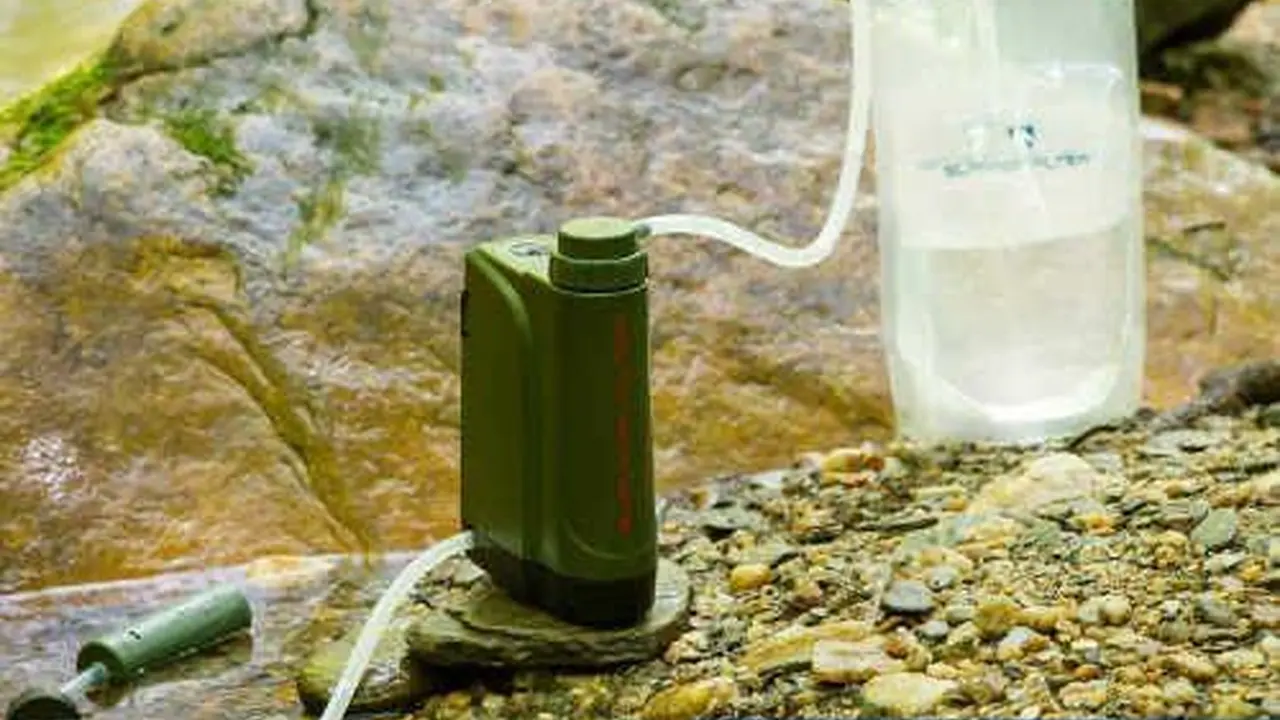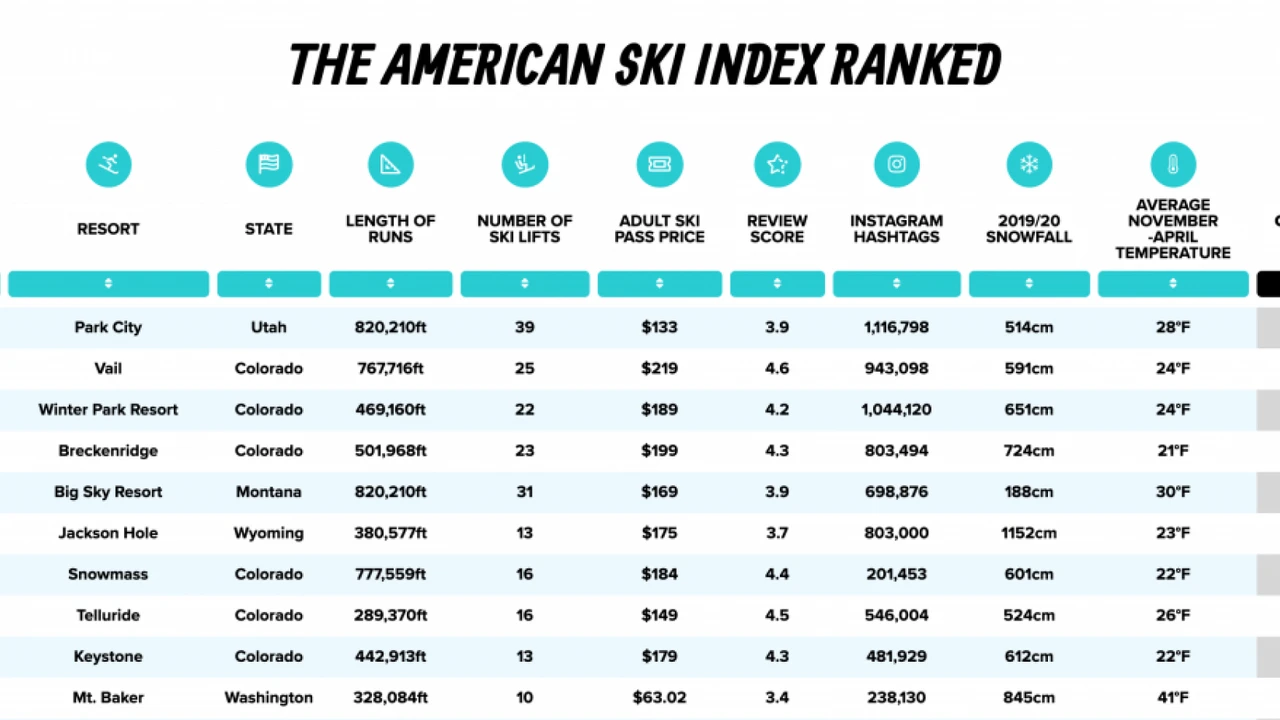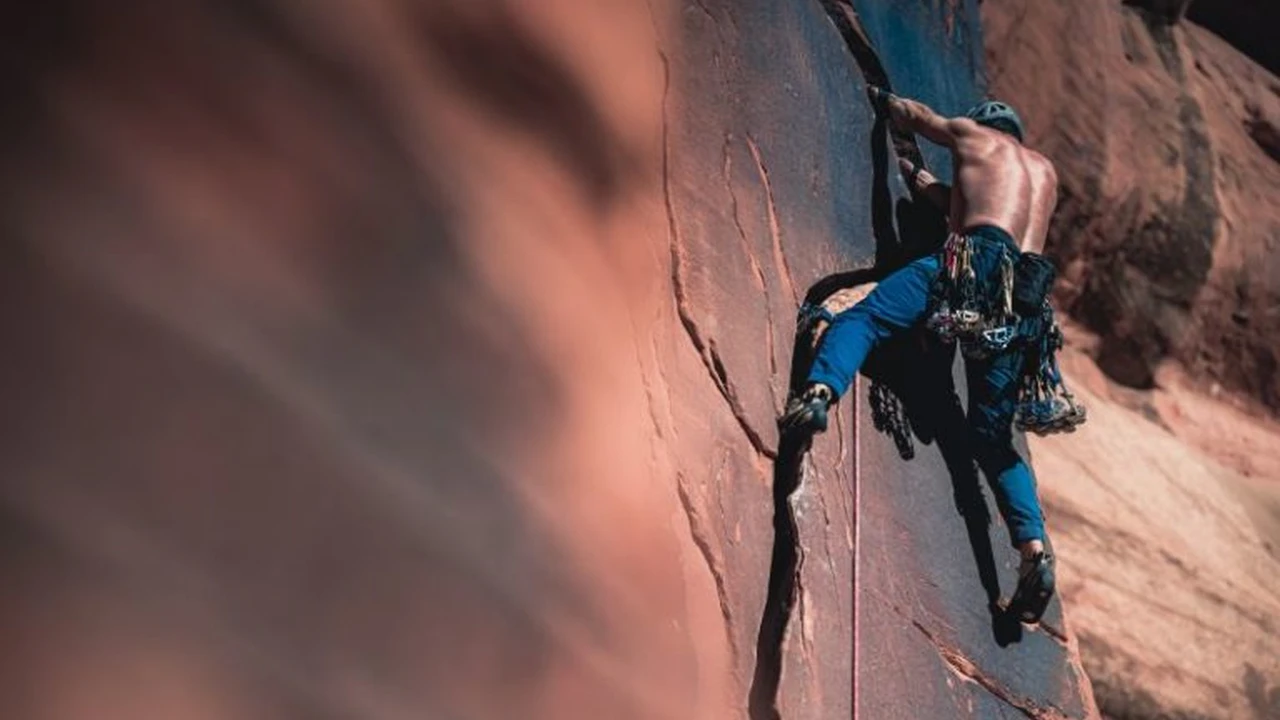Best Portable Water Filters for Wilderness Survival
Ensure safe hydration with the best portable water filters for wilderness survival. Essential gear for clean drinking water on the go.

Best Portable Water Filters for Wilderness Survival
Why Portable Water Filters are Your Lifeline in the Wild
Hey adventurers! Ever found yourself deep in the backcountry, miles from civilization, and suddenly realized your water supply is dwindling? Or maybe you’ve stumbled upon a pristine-looking stream, but that little voice in your head whispers about giardia and other nasty bugs? That’s where portable water filters become your absolute best friend. They’re not just a convenience; they’re a crucial piece of survival gear that can literally save your life by turning questionable water sources into safe, drinkable hydration. Whether you’re backpacking, hiking, camping, or facing an emergency, having a reliable way to purify water is non-negotiable. We’re talking about preventing debilitating illnesses that can turn an epic adventure into a nightmare. So, let’s dive into why these gadgets are so vital and what makes a good one.
Understanding Water Filtration Technologies: What’s Filtering Your Water?
Before we jump into specific products, it’s super helpful to understand how these things actually work. Not all filters are created equal, and different technologies target different contaminants. Knowing the basics will help you pick the right tool for your specific adventures.
Mechanical Filtration: The Physical Barrier Against Contaminants
Most portable water filters rely on mechanical filtration. This is essentially a physical barrier, like a sieve, that blocks out larger particles and microorganisms. The effectiveness depends on the pore size of the filter. We’re talking about tiny pores, measured in microns (one-millionth of a meter!).
- Hollow Fiber Filters: These are super popular and for good reason. They consist of bundles of tiny, U-shaped hollow fibers with microscopic pores (usually around 0.1 to 0.2 microns). Water is forced through these pores, trapping bacteria (like E. coli, Salmonella) and protozoa (like Giardia, Cryptosporidium). They’re fast, lightweight, and don’t require chemicals. Think of them as a super-fine spaghetti strainer for microbes.
- Ceramic Filters: These use a porous ceramic material, often impregnated with silver to prevent bacterial growth within the filter itself. They tend to have slightly larger pore sizes than hollow fiber (0.2 to 0.5 microns) but are incredibly durable and can be cleaned repeatedly by scrubbing the surface. They’re great for long-term use or in areas with very turbid water.
Activated Carbon: Improving Taste and Removing Chemicals
While mechanical filters are great for biological contaminants, they don’t do much for chemicals, pesticides, or improving taste. That’s where activated carbon comes in. Many filters incorporate an activated carbon component, either as a pre-filter or integrated into the main filter.
- How it Works: Activated carbon has a massive surface area with tiny pores that can adsorb (not absorb, but adsorb – molecules stick to the surface) chemicals, heavy metals, chlorine, and other organic compounds that cause bad tastes and odors.
- When You Need It: If you’re drawing water from sources that might be contaminated by agricultural runoff, industrial pollution, or just taste a bit funky, a filter with activated carbon is a huge plus.
UV Purification: Zapping Microbes with Light
UV purifiers don’t filter water; they sterilize it. They use ultraviolet light to disrupt the DNA of bacteria, viruses, and protozoa, rendering them unable to reproduce and cause illness. They’re effective against viruses, which mechanical filters often miss due to their tiny size.
- Pros: Kills viruses, no pumping or chemicals, relatively fast.
- Cons: Requires batteries, doesn’t remove sediment or improve taste (you’ll still need a pre-filter for turbid water), and you need clear water for the UV light to be effective.
Chemical Treatment: The Old School Method
Tablets or drops (like iodine or chlorine dioxide) are a classic, lightweight, and inexpensive way to purify water. They work by killing bacteria, viruses, and protozoa over a period of time (usually 30 minutes to 4 hours, depending on the chemical and water temperature).
- Pros: Very lightweight, compact, effective against viruses.
- Cons: Can leave an aftertaste, requires wait time, less effective in very cold or turbid water, and some people have sensitivities to the chemicals. Best used as a backup or for very light trips where weight is paramount.
Top Contenders: Best Portable Water Filters on the Market
Alright, let’s get to the good stuff! We’ve tested and researched a bunch of options to bring you the cream of the crop. We’ll look at different types of filters, their ideal use cases, and what makes them stand out.
Sawyer Squeeze Filter: The Ultralight Champion
The Sawyer Squeeze is a legendary name in the backpacking world, and for good reason. It’s incredibly lightweight, compact, and boasts an impressive filtration capability.
- Technology: Hollow fiber membrane (0.1 micron absolute).
- What it Filters: Removes 99.99999% of all bacteria (Salmonella, Cholera, E. coli, etc.) and 99.9999% of all protozoa (Giardia, Cryptosporidium, etc.).
- How it Works: You can screw it directly onto most standard plastic water bottles (like a Smartwater bottle), use the included squeeze pouches, or attach it in-line with a hydration pack. You simply squeeze the dirty water through the filter.
- Flow Rate: Excellent, especially when clean.
- Lifespan: Sawyer claims up to 1 million gallons if properly backflushed. That’s basically a lifetime!
- Ideal Use Case: Ultralight backpacking, day hikes, emergency kits, international travel where water quality is questionable. It’s a fantastic all-rounder.
- Pros: Extremely lightweight (around 3 oz), very high flow rate, incredibly long lifespan, versatile attachment options, affordable.
- Cons: Doesn't remove viruses (though rare in North American backcountry), doesn't improve taste (no activated carbon), squeeze pouches can be fragile over time.
- Price: Around $35-$45 USD.
- Where to Buy: REI, Amazon, Backcountry.com.
Katadyn BeFree Water Filter: The Fast and Easy Option
The Katadyn BeFree burst onto the scene as a strong competitor to Sawyer, offering an even faster flow rate and a super user-friendly design.
- Technology: Hollow fiber EZ-Clean Membrane (0.1 micron).
- What it Filters: Removes 99.9999% of bacteria and 99.9% of protozoa.
- How it Works: It comes with a soft, collapsible flask (0.6L, 1.0L, or 3.0L options). You fill the flask with dirty water, screw on the filter, and squeeze or drink directly. The 'EZ-Clean' part means you can simply swish the filter in water to clean it, no backflushing syringe needed.
- Flow Rate: Incredibly fast, often cited as one of the fastest on the market.
- Lifespan: Rated for up to 1,000 liters (264 gallons). Less than Sawyer, but still plenty for many adventures.
- Ideal Use Case: Fast-and-light hiking, trail running, day trips, or anyone who prioritizes speed and ease of use.
- Pros: Super fast flow rate, very easy to clean, lightweight (around 2.3 oz for the 0.6L version), compact.
- Cons: Shorter lifespan than Sawyer, doesn't remove viruses or improve taste, the soft flask can be a bit floppy when full.
- Price: Around $40-$50 USD.
- Where to Buy: REI, Amazon, Moosejaw.
Platypus GravityWorks Filter System: The Group Hydration Solution
If you’re heading out with a group or need to filter larger quantities of water for cooking and drinking, a gravity filter system like the Platypus GravityWorks is a game-changer. No more endless pumping!
- Technology: Hollow fiber (0.2 micron).
- What it Filters: Removes 99.9999% of bacteria and 99.9% of protozoa.
- How it Works: It’s a two-bag system. You fill the 'dirty' bag with water, hang it from a tree or branch, and gravity does the rest, pushing water through the filter into the 'clean' bag.
- Flow Rate: Very fast, typically 1.75 liters per minute.
- Lifespan: Rated for 1,500 liters (396 gallons).
- Ideal Use Case: Group camping, base camps, family backpacking trips, canoe trips, or any scenario where you need to process a lot of water without effort.
- Pros: Effortless filtration, high volume, fast flow rate, can be used to fill multiple bottles/reservoirs at once, relatively compact for its capacity.
- Cons: Heavier and bulkier than personal filters, doesn't remove viruses or improve taste, requires a hanging point.
- Price: Around $120-$150 USD for the 4.0L system.
- Where to Buy: REI, Backcountry.com, CampSaver.
MSR Guardian Purifier: The Ultimate Virus Protection
For serious adventurers heading to remote areas or developing countries where viruses are a concern, the MSR Guardian is the gold standard. It’s built to military-grade specifications.
- Technology: Hollow fiber (0.02 micron).
- What it Filters: Removes 99.9999% of bacteria, 99.99% of viruses, and 99.9% of protozoa. This is one of the few portable filters that effectively removes viruses.
- How it Works: It’s a pump filter. You place the intake hose in the dirty water source and pump the handle. It also self-cleans with every stroke, backflushing a small amount of water to keep the filter clear.
- Flow Rate: Decent for a pump filter, around 2.5 liters per minute.
- Lifespan: Rated for 10,000 liters (2,640 gallons).
- Ideal Use Case: International travel, expeditions, emergency preparedness, or any situation where virus protection is paramount.
- Pros: Filters viruses, incredibly durable and robust, self-cleaning mechanism, high flow rate for a pump filter.
- Cons: Very expensive, heavier and bulkier than other options, still requires manual pumping.
- Price: Around $350-$400 USD.
- Where to Buy: REI, MSR Gear, Backcountry.com.
SteriPEN Ultra: The UV Light Solution
If you prefer a chemical-free, filter-free approach for clear water, the SteriPEN Ultra is a fantastic choice. It uses UV light to purify water.
- Technology: UV-C light.
- What it Filters: Destroys over 99.9% of bacteria, viruses, and protozoa.
- How it Works: You simply immerse the UV lamp in a bottle of water (up to 1 liter) and stir until the light indicates purification is complete (usually 45-90 seconds).
- Flow Rate: Fast purification time per liter.
- Lifespan: Lamp rated for 8,000 treatments. Rechargeable via USB.
- Ideal Use Case: Travel, backpacking where water is generally clear, emergency kits, or as a backup.
- Pros: Kills viruses, no pumping or chemicals, lightweight (around 4.9 oz), rechargeable, easy to use.
- Cons: Doesn't remove sediment or improve taste (requires pre-filtering for turbid water), relies on batteries, fragile lamp, not ideal for very large volumes.
- Price: Around $100-$120 USD.
- Where to Buy: REI, Amazon, Backcountry.com.
Choosing Your Perfect Water Filter: Factors to Consider
With so many great options, how do you pick the right one for your adventures? It really comes down to your specific needs and priorities.
Intended Use: Day Hike vs. Expedition
- Day Hikes/Trail Running: Lightweight, fast, and easy-to-use options like the Sawyer Squeeze or Katadyn BeFree are perfect. You just need enough for personal hydration.
- Multi-Day Backpacking: Sawyer Squeeze or Katadyn BeFree are still excellent. Consider a larger capacity squeeze bag or a hydration reservoir adapter.
- Group Camping/Base Camp: A gravity filter like the Platypus GravityWorks will save you a ton of time and effort.
- International Travel/Expeditions: If viruses are a concern, the MSR Guardian or a SteriPEN (possibly with a pre-filter) are your best bet. Chemical treatments can also be a good backup.
- Emergency Preparedness: A robust, long-lasting filter like the Sawyer Squeeze or a ceramic filter (like the Katadyn Pocket) is ideal. Chemical tablets are also a must-have backup.
Weight and Packability: Every Ounce Counts
For ultralight backpackers, every gram matters. The Sawyer Squeeze and Katadyn BeFree are champions in this category. Pump filters and gravity systems will naturally be heavier, but their benefits might outweigh the extra weight for certain trips.
Flow Rate and Ease of Use: Hydration on the Go
How quickly do you need water? If you’re constantly on the move and need quick refills, a fast-flowing filter like the Katadyn BeFree or Sawyer Squeeze is key. Gravity filters offer effortless high-volume filtration, while pump filters require manual effort but offer versatility.
Contaminant Removal: What Are You Protecting Against?
Most filters handle bacteria and protozoa. If you’re concerned about viruses (common in developing countries or highly populated areas), you’ll need a filter with a smaller pore size (like the MSR Guardian) or a UV purifier (SteriPEN) or chemical treatment.
Durability and Lifespan: Investment for the Long Haul
Some filters, like the Sawyer Squeeze, boast incredibly long lifespans, making them a fantastic long-term investment. Others, like the Katadyn BeFree, have shorter lifespans but are still very durable for their intended use. Consider how often you’ll be using it and in what conditions.
Maintenance: Keeping Your Filter Running Smoothly
All filters require some maintenance. Hollow fiber filters need to be backflushed regularly to maintain flow rate. Ceramic filters can be scrubbed clean. UV purifiers need battery charging. Understand the maintenance requirements before you buy.
Practical Tips for Using and Maintaining Your Water Filter
Having the best filter is only half the battle; knowing how to use and care for it properly is just as important. These tips will ensure your filter lasts longer and keeps you safe.
Pre-Filtering: The First Line of Defense
If your water source is murky or full of sediment, always pre-filter it. This means using a bandana, a coffee filter, or even a sock to remove larger particles before they reach your main filter. This prevents clogging and extends the life of your filter. Many filters come with a pre-filter screen on their intake hose.
Backflushing and Cleaning: Keep That Flow Rate High
This is crucial for hollow fiber filters. Over time, tiny particles build up on the outside of the fibers, reducing flow. Backflushing (forcing clean water backward through the filter) clears these blockages. Sawyer filters come with a syringe for this. Katadyn BeFree filters can be cleaned by simply swishing them in water. Always follow the manufacturer’s instructions for cleaning.
Freezing Prevention: A Filter’s Worst Enemy
Hollow fiber filters are extremely susceptible to damage from freezing. If water freezes inside the tiny pores, it expands and can rupture the fibers, rendering the filter ineffective and unsafe. Always keep your filter from freezing. In cold weather, sleep with it in your sleeping bag or keep it in an inner pocket close to your body. If you suspect it has frozen, it’s best to replace it.
Storage: Ready for Your Next Adventure
Before storing your filter for an extended period, make sure it’s thoroughly cleaned and completely dry. This prevents mold and mildew growth. Store it in a cool, dry place. Some manufacturers recommend storing filters in a slightly damp state (e.g., in a sealed bag with a few drops of water) to prevent the fibers from drying out too much, but always check your specific model's instructions.
Testing Your Filter: Peace of Mind
Before a big trip, especially if your filter has been stored for a while or if you suspect it might have frozen, it’s a good idea to test it. Filter some water at home and check for any leaks or significantly reduced flow rates that might indicate damage. Some filters have integrity tests you can perform.
Beyond the Filter: Other Hydration Considerations
While a good filter is paramount, remember that it’s part of a larger hydration strategy. Don’t forget these other important aspects:
Water Bottles and Reservoirs: Carrying Your Clean Water
You’ll need something to collect and carry your filtered water. Nalgene bottles are classic and durable. Hydration reservoirs (like CamelBak or Platypus) are great for hands-free drinking on the go. Many filters can be integrated directly with these systems.
Electrolytes: Replenishing What You Lose
Especially in hot weather or during strenuous activity, you’ll sweat out essential electrolytes. Adding electrolyte tablets or powders to your filtered water can help prevent cramping and fatigue, keeping you performing at your best.
Water Source Selection: The Smarter You Are, The Less Your Filter Works
Even with the best filter, always try to choose the cleanest water source available. Flowing water is generally better than stagnant. Avoid water near agricultural runoff, human habitation, or heavy animal traffic. The less work your filter has to do, the longer it will last and the safer your water will be.
Final Thoughts on Staying Hydrated in the Wild
Investing in a high-quality portable water filter is one of the smartest decisions you can make for any outdoor adventure. It provides peace of mind, ensures your health, and allows you to explore further and longer without worrying about your water supply. Whether you choose the ultralight efficiency of a Sawyer Squeeze, the rapid flow of a Katadyn BeFree, the group convenience of a Platypus GravityWorks, or the ultimate protection of an MSR Guardian, make sure it’s a tool you trust. Stay hydrated, stay healthy, and keep exploring!
:max_bytes(150000):strip_icc()/277019-baked-pork-chops-with-cream-of-mushroom-soup-DDMFS-beauty-4x3-BG-7505-5762b731cf30447d9cbbbbbf387beafa.jpg)






